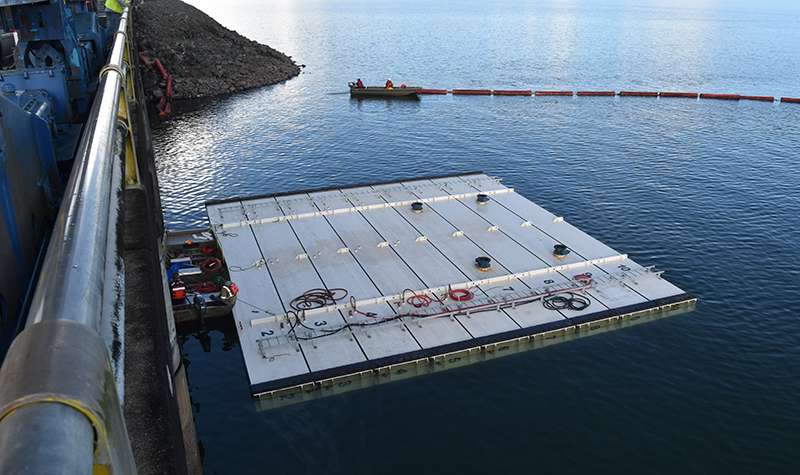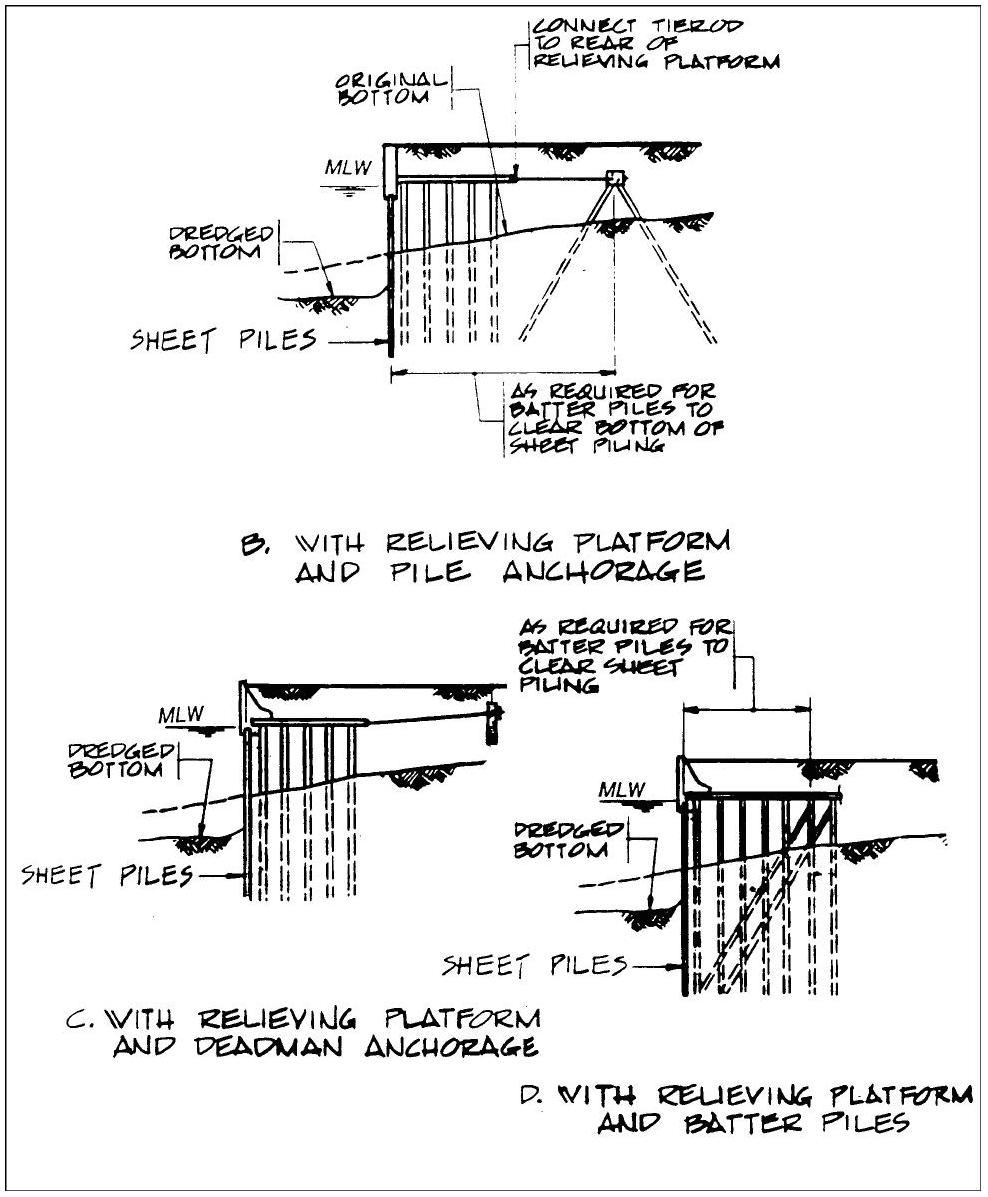Checking Out the Numerous Uses Bulkhead Frameworks in Modern Design
Bulkhead structures play a considerable duty in modern-day style, offering both functional and aesthetic purposes. They can define spaces, enhance storage solutions, and improve lighting. In commercial setups, they act as centerpieces that show brand identification - Bulkhead on Lake Livingston. Furthermore, their assimilation frequently supports audio administration and lasting methods. Comprehending the complete range of their applications reveals much regarding modern layout trends and user experience. What innovative usages of bulkheads might arise in the future?
Specifying Bulkhead Frameworks
Bulkhead structures play a crucial duty in modern-day architecture, acting as necessary components in various building designs. These structures are typically specified as elevated platforms or ceilings, frequently used to hide mechanical systems, wiring, or pipes. Bulkheads can be discovered in both business and household setups, where they provide a seamless blend of performance and looks. Their style can incorporate lighting fixtures and various other decorative components, improving the general aesthetic appeal of a space.
Normally built from products such as metal, drywall, or timber, bulkheads can be customized to fit the building design and needs of the structure (Bulkhead on Lake Livingston). They serve not just to hide unsightly infrastructure yet additionally to develop specified zones within open rooms. By handling the circulation of a space, bulkheads add to the spatial company, making them a considerable aspect of contemporary architectural technique. Their interpretation encapsulates both functional and visual measurements.
Functional Applications in Residential Design
Bulkhead frameworks play a vital role in domestic layout by facilitating area optimization techniques that make best use of usable areas. Additionally, they contribute aesthetic style components that improve the aesthetic appeal of living spaces. Additionally, these frameworks offer crucial structural support services, making certain the honesty and safety and security of the home.
Area Optimization Techniques
As contemporary property layouts significantly prioritize reliable usage of area, ingenious methods arise to optimize performance without giving up appearances. One popular approach entails the combination of bulkhead structures, which can mark locations while supplying crucial storage space solutions. These frameworks can be utilized to produce upright storage devices that enhance both organization and access. Furthermore, multi-functional furniture, such as exchangeable couches and foldable tables, matches bulkhead layouts, allowing spaces to adapt to differing needs. Open flooring plans better optimize spatial circulation, urging versatility in usage. Including built-in shelving and recessed lights within bulkheads also adds to a streamlined environment, guaranteeing that every square inch of space is made use of effectively and harmoniously within the general design.
Visual Style Aspects

Architectural Support Solutions
In modern-day household design, a reliable architectural assistance solution is crucial for preserving the stability of rooms while enhancing format and performance. Bulkhead frameworks play a significant role in this scenario, functioning as both support and partitioning aspects. They can hide mechanical systems, such as pipes and electrical wiring, while giving reinforcement to the ceiling and floor systems. By tactically positioning bulkheads, designers can develop defined locations within open floor plans, enhancing usability without endangering structural stability. Additionally, these frameworks can suit lighting fixtures, contributing to both visual appeals and functionality. To summarize, bulkhead frameworks are vital in household layout, supplying functional assistance options that boost both the capability and visual appeal of living areas.
Enhancing Visual Appeals in Commercial Rooms
When business rooms accept innovative bulkhead structures, they not only define physical limits but additionally greatly enhance the overall aesthetic appeals of the atmosphere. These building aspects work as visual focal factors, drawing focus and producing a feeling of intrigue. By integrating diverse materials such as steel, wood, or glass, bulkheads can reflect a brand name's identification and objective, adding to a natural style.
The strategic positioning of bulkheads can manipulate light and shadow, adding deepness and dimension to otherwise level spaces. This interaction can transform a commercial location into a welcoming environment, encouraging consumer engagement. Furthermore, using color and structure in bulkhead design can stimulate details feelings, improving the total client experience. Inevitably, the thoughtful combination of bulkhead frameworks elevates the visual appeal of industrial areas, making them not just functional but additionally visually charming, therefore cultivating a long-term impression on visitors.
Acoustic Efficiency and Noise Monitoring
Reliable acoustic efficiency plays an important role in modern-day architecture, specifically within commercial areas where audio management is critical. Bulkhead structures can significantly enhance acoustic high qualities by soaking up noise, decreasing reverberation, and mitigating sound transfer in between locations. These features are especially useful in settings such as restaurants, cinemas, and workplaces, where clear communication and a pleasant acoustic experience are paramount.
The strategic placement and style of bulkheads can help develop sound-buffer areas, efficiently separating noisy areas from quieter ones. Materials utilized in bulkhead construction, such as soft finishes and acoustic panels, contribute to their sound-dampening capacities. In addition, the incorporation of bulkheads enables the combination of sound-absorbing aspects without compromising visual allure. By attending to acoustic performance, architects can produce unified atmospheres that enhance convenience, improve individual experience, and promote performance, making bulkheads an important element in the style of modern commercial spaces.
Integrating Bulkheads for Effective Area Usage
Frequently overlooked, the integration of bulkheads in building style can greatly boost area use in contemporary structures. These architectural aspects offer several useful objectives, providing a method to hide mechanical systems, electrical circuitry, and plumbing without jeopardizing appearances. By tactically placing bulkheads, architects can produce specified areas within open floor strategies, thereby helping investigate this site with far better organization and flow.
Moreover, bulkheads can integrate storage space services and illumination attributes, optimizing the performance of or else wasted vertical room. In residential setups, they may define areas such as kitchen areas or living areas, while in business rooms, they can boost the effectiveness of designs by plainly noting paths and workspace.
Inevitably, the thoughtful assimilation of bulkheads adds to a more visually appealing and orderly environment, permitting adaptable spaces that can develop with the demands of their owners. This approach not only optimizes room but also cultivates a much more harmonious communication between kind and function.
Bulkheads in Public Style

Architectural Aesthetic Enhancements
While many architectural components objective for functionality, bulkheads in public architecture offer a double purpose by improving visual charm. These frameworks commonly create visual rate of interest via their design, integrating seamlessly with bordering elements. By utilizing various materials, appearances, and colors, bulkheads can add to an one-of-a-kind identity for public spaces, such as airports, galleries, and libraries. Their tactical positioning aids to define locations, assisting visitors while adding depth to the overall style. In addition, bulkheads can highlight lighting, developing dynamic environments that change throughout the day. This visual improvement not just elevates the site visitor experience but likewise cultivates a local color, making bulkheads an essential consideration in modern public architecture. On the whole, bulkheads embody the combination of kind and function.

Architectural Assistance Solutions
As architects look for innovative means to boost the structural honesty of public areas, bulkheads become essential elements in the design and building procedure. These structures supply vital support, specifically in locations based on heavy foot traffic or dynamic tons. By dispersing weight uniformly, bulkheads help protect against structural failing while permitting versatile design options. In huge locations, such as arenas and convention facilities, bulkheads are typically incorporated right into the overall building framework, making certain stability and safety and security. In addition, they can help with the consolidation of utilities and mechanical systems, adding to the effectiveness of area use. Inevitably, bulkheads stand for an essential service in modern public style, enhancing both functionality and security in community-focused settings.
Environmental Defense Steps
Incorporating environmental management actions right click to find out more into public design has actually ended up being significantly click now important as urban developers prioritize sustainability alongside structural assistance. Bulkhead frameworks serve a double objective hereof, functioning as obstacles against disintegration and flooding while simultaneously improving the visual appeal of city landscapes. Their layout commonly includes all-natural components such as greenery, which can boost air high quality and provide habitats for wild animals. Additionally, bulkheads can be engineered with permeable products that permit water absorption, lowering drainage and advertising groundwater recharge. This assimilation of environmental factors to consider not only maintains the setting yet likewise cultivates area durability against climate adjustment. By using bulkheads properly, architects add to lasting metropolitan advancement that lines up with modern environmental goals.
Future Trends in Bulkhead Design
Arising fads in bulkhead style reflect a growing emphasis on sustainability, technology, and functionality in contemporary design. Developers are progressively incorporating environment-friendly materials, such as recycled composites and bioplastics, to decrease environmental impact. On top of that, the integration of wise technology is coming to be common, enabling bulkheads to serve multi-functional functions, including power storage space and climate control.
In city settings, modular bulkhead systems are gaining traction, supplying flexibility in layout and ease of installment. These systems can be adjusted to different landscapes, enabling for efficient area application. Additionally, aesthetic considerations are advancing; bulkheads are now being developed to boost visual allure, typically including imaginative aspects that resonate with regional culture.
As environment durability becomes a concern, future bulkhead styles will likely focus on flooding defense and stormwater management, making sure architectural honesty while dealing with ecological difficulties. This shift symbolizes an alternative method to design that meets both ecological responsibilities and human demands.
Frequently Asked Inquiries
What Materials Are Frequently Utilized for Bulkhead Building And Construction?
Typical products for bulkhead construction include concrete, steel, lumber, and composite materials. These choices provide toughness, architectural stability, and resistance to environmental variables, making them suitable for different applications in building and construction and design tasks.
Exactly How Do Bulkheads Impact Structure Energy Efficiency?
Bulkheads improve constructing power effectiveness by providing thermal insulation and decreasing air leak (Bulkhead on Lake Livingston). They assist preserve interior temperature levels, thus reducing heating and cooling down demands, ultimately leading to lower power prices and boosted ecological sustainability
Exist Any Building Regulations Details to Bulkhead Frameworks?
Yes, building codes particular to bulkhead frameworks exist, differing by location. These guidelines normally address security, structural honesty, and ease of access, guaranteeing that bulkheads meet called for criteria for building and design within a provided territory.
Can Bulkheads Be Easily Modified or Eliminated Later On?
Bulkheads can usually be modified or removed, depending upon their layout and building and construction. Such alterations may need careful planning and adherence to structure codes to guarantee structural integrity and security are maintained throughout the procedure.
What Are the Costs Connected With Installing Bulkhead Structures?
The prices connected with mounting bulkhead frameworks can differ considerably, commonly affected by products, style intricacy, and labor. Typically, expenditures range from moderate to high, relying on the project's certain requirements and place.
Bulkhead frameworks play a crucial function in modern-day architecture, offering as essential parts in different building designs. Bulkhead frameworks play a necessary function in household layout by assisting in space optimization approaches that maximize usable areas. Commonly overlooked, the assimilation of bulkheads in building design can substantially boost space usage in contemporary structures. As designers seek cutting-edge ways to enhance the structural stability of public spaces, bulkheads emerge as important components in the style and construction process. The expenses connected with setting up bulkhead structures can vary significantly, typically affected by products, layout intricacy, and labor.